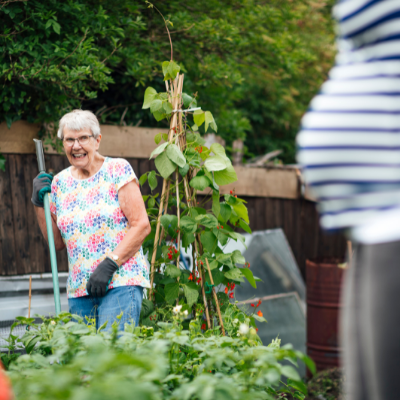About Co-operatives
What is a cooperative?
All over the world, millions of people have chosen the co-operative model of business enterprise to support them to reach their personal and community development goals. From the outside, they may look like a normal business or organisation, but on a closer look look very different – and in a positive way.
A co-operative is owned and controlled by its members; the people who are closest to the business. Members could be customers or service users, workers or suppliers, who have all come together to meet a shared economic, social, and/or cultural need and aspiration.
Co-operatives are found in every sector, from agriculture, consumer and financial services, housing, health and social care, funeral, sports, tourism, utilities (telephone and internet services, electricity, water, gas) to transport.
Co-operatives are significant economic and social actors. Co-operatives UK’s annual survey, ‘The Co-op Economy’, demonstrates just how resilient the co-operative model is. Businesses that you may have heard of, but did not realise they are a co-op include Birds Eye Peas, Mole Valley Farmers Ltd, and Arla Foods.
PRINCIPLES
There are seven principles that co-ops share and embed within their business:

1.Voluntary and open membership
Co-operatives are voluntary organisations, open to all persons able to use their services and willing to accept the responsibilities of membership, without gender, social, racial, political or religious discrimination.
This makes co-ops more effective businesses because they know how to get the best out of people, and they don’t arbitrarily exclude people who might have something important to contribute. At the same time they do limit their input to people who have a genuine stake in the quality of the outcome and who have real experience of what the co-op is trying to achieve.
2.Democratic member control
Co-operatives are democratic organisations controlled by their members. This means they have equal say in the running and how profits are used. People serving as elected representatives are accountable to the membership.
This gives co-operatives an advantage because they aren’t unduly influenced by the personal preferences of a small number of people but instead base their goals and decisions on multiple viewpoints and more general interests that unite the whole community they serve.


3. Economic participation
Members contribute financially to their co-operative in some way. This might be because they work for the co-op, they buy its services or products or because they have invested in it. However, the membership stake is fair and equitable; and any share of profits is in proportion to transactions with the co-op.
Investors can be fairly rewarded, but not from profits. Instead, their compensation is treated as a business expense; and it is no more than the market price to attract and retain investment.
Co-ops always retain some profits as a reserve – both to maintain resilience, and to be of benefit to the next generation of co-operators. That’s why they are better than most businesses at surviving economic shocks.
4. Autonomy and independence
Co-operatives are autonomous organisations controlled by their members. If they enter into agreements with other organisations, including governments, or raise capital from external sources, they do so on terms that ensure democratic control by their members and maintain their co-operative autonomy.
A related idea is subsidiarity: decision making at the lowest possible level. Co-ops are better managed than most businesses because decisions are taken close to the people that are most affected.


5. Education, training and information
Co-operatives provide education and training for their members so they can contribute effectively to the development of their co-operative. They also inform the general public about the nature and benefits of co-operation.
The focus on education and the skills of working together are a major reason why productivity in co-operatives is often higher than in comparable businesses.
6. Co-operation among co-operatives
Co-operatives serve their members most effectively and strengthen the co-operative movement by working together through local, national, regional and international structures.
This makes co-ops more effective at delivering services to their members because they can build resilient supply chains with trusted partners. By increasing the number of ways in which their members can co-operate, a co-op then prosper from their greater confidence and security.


7. Concern for the community
Co-operatives work for and support the development of their communities. This is understood as being wholly sustainable development – that is, it is socially sustainable, ecologically sustainable and economically sustainable.
This means that co-ops aren’t at risk from externalities – they haven’t any hidden costs that could crystallise unexpectedly and they don’t build their business model on foundations that can’t last.
Become a member of South West Co-operative Development today to contribute to your local co-operative movement
South West Co-operative Development Limited
Registered as a Multistakeholder Community Benefit Society: 31193R
Registered office address: 10 East Reach, Taunton TA1 3EW
Office phone: 0300 456 2265
Email: development@southwest.coop
